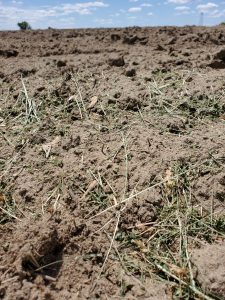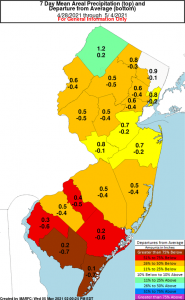Many landowners have added on pasture fowl in the last year and realized the need for pasture protection from owls, eagles, and hawks; and minks, skunks, and foxes. Many have gotten guardian animals. These animals range from great pyrenes to donkeys to lamas.
The rule of thumb. When the heat and sun are high in a cloudless sky, shade is essential to prevent dehydration of all livestock including guardians and regardless of species or breed; or the ancestral climate where the animals originated from. If it is too hot and too bright to be outside wearing a winter coat and sunglasses, make sure animals have access to sun-shelters. This is especially relevant now as we enter a week of high temperatures without precipitation. Recently sheared animals are at risk of sun burn and light skinned, light eyed animals are at risk of sun blistering on eyes, noses, and lips. As fly season has begun, this is a critical distinction. Fair-skinned animals with lighter eye pigment and lighter pigment on nose and lips are more prone to pink eye and other eye infections.
Tree cast shade is excellent as long as the shade cast direction is into the enclosed area from high noon to sunset. In the absence of natural shade cast into the pasture by high noon, man-made shelters need to be provided. Consider modifying fences to allow animals to reach tree lines. Man-made shelters should reflect sun and must allow for air flow. In the same manner a pop-up tent would provide shade for humans in outdoor recreation settings. The size of the shelter must match the size of the herd lying down with social distancing space included. This may require splitting herds up to match shelter sizes.
Non-cattle, non-equine livestock guardian shelters. Round bale feeders covered with a metal gate and tarp or plywood are a quick emergency solution for single unfettered dogs, rams, and other small statured guardian animals as long as they can easily climb through the spaces. Usage has to be monitored to make sure the livestock being guarded are not crowding into the same shaded space and collars should be removed to prevent getting caught on bolts. These types of temporary shade structures should not be used for multispecies groups. A better solution is calf huts or home-built a-frames.
For large herds (excluding cattle and equine). Multiple shelter’s will be needed and again, herds may need to be split into groups. If you do not have a barn or lean too shed, flat bed wagons tall enough for sheep, lambs, goats, geese, and chickens are another quick solution. In pastured situations, these mobile shelters must be moved regularly to avoid fly larval build up and bacterial contamination of teats in nursing dams. Stationary shelters should be cleaned regularly for the same reasons.
Prevent young stock injury. Overcrowding fights for space in shade will lead to lamb, kid, chick and calf injuries. Dogs and donkeys will naturally protect their ‘resting space’. Chickens and other fowl should not be crowding into the same space as the guardian dog or donkey. As your herd expands, provide more shade. If nothing else, even round bales set out along the outside of the fence so that their shadow casts inwards will provide some shade from the effect of high sun and high heat.
Monitor water availability, quality, and temperature. When animal’s crowd water sources, contamination is inevitable. As daily temperatures increase, watering systems need to be cleaned daily and covered to lower the temperature of the water. Water temperature influences rumen and gut function and just like humans, animals don’t want to drink super warm water. As the temperature of the water goes up, consumption goes down. For man-made watering systems containers, provide water shade when water temperatures are staying above 77°F.
Make sure all animals and fowl have access to plain white salt. In single species herds, specialized salt blocks containing other minerals should be used that are species appropriate. Remember, salt block mineral formulations for cattle are not always safe for sheep and goats. In mixed herds, during high heat, make sure animals have daily access to choose from plain white salt and iodized salt blocks.




